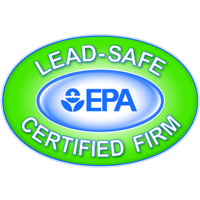Those who work in the Oil & Gas and Construction industries are constantly faced with unique dangers related to their jobs. A single wrong step or seemingly minor mistake can have serious consequences.
According to the Census of Fatal Occupational Injuries, individuals in the oil and gas industries are seven times more likely to die in a job-related incident than those in other industries.
Thus, importance of safety training for workers is imperative.
OSHA Training in Oil & Gas and Construction
On the Job Hazards
Workers in the oil and gas and construction industry are potentially exposed to several health and safety hazards related to their jobs. Many can cause serious injuries or fatalities.
Dangerous conditions and hazards that are likely to result in a fatality include:
- Exposure to Chemical Substances
- Being Enclosed in Confined Spaces
- Risk of Fires and Explosions
- Increased Risk of Fall Hazards
- Accidents Resulting in being Caught-between, Caught-in or Struck-by
- Vehicular Accidents
Areas of OSHA Safety Training
OSHA specifically mentions that it is the responsibility of employers to provide health and safety information and instructions to employees. It also requires that employers comply with safety and health standards according to the Occupational Safety and Health Act of 1970.
Employers are responsible for ensuring employees have adequate training for the different hazards that are present in the work environment. They also need to understand the policies, equipment, and procedures needed to address hazards.
Employers must document the training of each employee, or in other words provide proof the employee received relevant training and understood it so it can be applied in the workplace.
The primary regulatory body for occupational safety in the United States is OSHA. They provide general safety standards for the oil and gas industry and cover numerous safety concerns which include those mentioned above and more specifically:
- Taking electrical and Fire Safeguards
- Safe Handling of Equipment
- Controlling Airborne Toxins
- Personal Protective Gear
- Hazardous Materials / Equipment Lockout
- Powered Platforms and Lifts
- Emergency Exits
- Walking Surfaces
- Proper use of various types of gas detectors
OSHA Safety Training and Compliance
If a site fails to provide adequate training or take safety precautions, the company can be fined. The amount of the penalty varies based on the severity of the violation. Lesser serious infractions incur a penalty of $12,934 per violation.
If the infraction is not corrected by the abatement date, an additional fine of $12,934 per day is applied. Willful or repeated violations incur a fine of $129,336 per infraction.* Having well-trained employees can preempt these fines and ensure worker safety.
Ultimately, the safety of oil and gas industry workers is the most important reason to ensure OSHA training is conducted and safety policies are enforced.
Secondary to keeping everyone safe, having employees, supervisors, and managers who are trained can help ensure compliance with OSHA regulations saving the company large sums of money.
The safety of oil and gas workers depends largely on the manner in which safety policies are communicated by managers and other higher-level personnel.
OSHA training can help prevent accidents or minimize the seriousness of injuries by close adherence to safety policies and procedures outlined in OSHA training.
Visit our Training Schedule to sign up for an OSHA training today! Our 10-hour course is best suited for entry-level employees, while our 30-hour course is great for supervisors and those with shared safety responsibilities.













